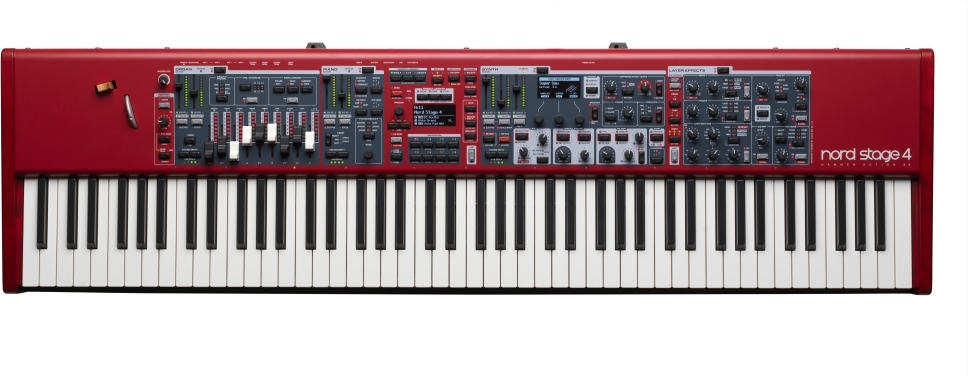How to choose a stage piano
Intended use
If you're a live performer, look for portability, sturdiness and quick access to functions. For studio use, aim for impeccable sound quality and advanced editing options. Some hybrid models are suitable for both.
Musician level
Beginner, intermediate or professional? Each level implies different needs in terms of feel, sound and ease of use.
Sound quality
Choose sounds from high-resolution samples or realistic modeling. The more varied the banks, the more artistic flexibility you'll have.
Keyboard feel
Weighted, triple-sensor keyboards with ivory/synthetic ebonics provide precise, nuanced playing.
Connectivity
Look for XLR/jack outputs, USB/MIDI ports, audio input, pedal inputs, and Bluetooth if possible. An integrated audio interface is a plus.
Polyphony
A minimum of 128 voices is recommended for seamless playing, even in dense passages or with multiple layers of sound.
Integrated effects
Chorus, delay, reverb and modulations enrich your playing without the need for external equipment.
Number of keys
An 88-key keyboard is standard for complete playing. Models 73 or 61 are available for weight savings or targeted use.
Interface and ergonomics
Prefer models with a direct interface (sliders, pots, LCD screens) for efficient control in concert.
Budget and reliability
High-performance models are available in all ranges. Recognized brands such as Yamaha, Roland, Nord, Korg or Kawai guarantee long-lasting quality.
Stage tips
Consider using a DI (Direct Input) box for better sound on stage, without interference.
What's the budget for a professional stage piano?
The price of a stage piano depends on many factors: keyboard quality, audio engine, connectivity, robustness and built-in effects. For an entry-level model designed for leisure or beginner use, expect to pay between 400 and 700 euros. These instruments offer good value for money, but are limited in terms of sound and functionality.
Mid-range models, between 800 and 1,500 euros, are ideal for intermediate musicians or teachers. They often incorporate weighted keyboards, sufficient polyphony and truly realistic sounds, while remaining relatively light and easy to transport.
For professional use, especially live performance, top-of-the-range keyboards generally exceed 2,000 euros. They feature advanced technologies (sound modeling, triple sensor, intuitive interface), robust construction and comprehensive connectivity. Models such as the Nord Stage 4, Yamaha CP88 or Roland RD-2000 are benchmarks in this category.
The choice depends on your level, your sound requirements, your frequency of use and your budget. A larger investment often guarantees greater durability and a richer playing experience.
top brands of stage pianos
Roland
Roland is renowned for its expertise in sound modeling. Its stage pianos combine technological innovation and robustness, perfect for touring musicians. References such as the RD-2000 (versatile, powerful and highly appreciated both in the studio and live) or the V-Stage 88 (designed for live performance with its realistic sounds and direct interface) embody the brand's know-how.
Korg
Korg offers keyboards with a vintage sound and a unique look. Their ergonomic design will appeal to creative musicians. The SV2-88 model is particularly popular for its retro aesthetic, its sounds inspired by the 70s and 80s, and its direct interface ideal for live performance.
Nord
Nord's red keyboards are a benchmark on stage. Audio quality, fast interface and reliability make them a top-of-the-range choice. The Nord Stage series stands out for its versatility and three independent sections (piano, organ, synth), while the Nord Electro series offers excellent portability with direct access to must-have vintage sounds.
Yamaha
Yamaha offers a wide range of models to suit all profiles, with consistently excellent sound quality and feel.
Kawai
Less well known for its stage pianos, Kawai is nonetheless a quality player. Realistic touch and expressive sound are the order of the day.
Essential accessories for stage pianos
Solid stand
Choose a sturdy, folding stand that's just right for your model.
Adjustable stool
For comfortable playing in any situation.
Headphones
Ideal for undisturbed practice.
Sound system
Choose PA speakers for live performance, or monitor speakers for home use.
Pedals
A sustain pedal is essential, but don't forget expression pedals to control volume or other effects.
Carrying case
Protect your instrument when you're on the move, with Star's Music's X-tone carrying cases, perfectly suited to different models of digital pianos or stage keyboards.
DI box
Useful for connecting to a mixing console without signal loss.
FAQ
Which stage piano should I choose to get started?
The Alesis Recital Pro is a good starting point for learning without spending too much.
Can a stage piano replace an acoustic piano?
In terms of sound and touch, top-of-the-range models like the CP88 or Nord Stage 4 come very close. Most stage keyboards use samples recorded from real acoustic pianos, offering a faithful reproduction of timbre and nuance.
What's the difference between a stage piano and an arranger keyboard?
The stage piano focuses on live performance with realistic sounds, while the keyboard arranger integrates automatic accompaniments. Its great advantage is that it packs an entire orchestra into a single instrument, allowing you to play solo while enjoying rich, dynamic accompaniment.
Do I need 88 keys?
Not necessarily, but it's ideal for a playing sensation close to that of an acoustic piano, and for playing a much more complete musical library.
Can I use a stage piano in my home studio?
Yes, if it has USB/MIDI connectivity, it integrates perfectly into a MAO configuration.
What effects are essential for live performance?
The effects most often used live are reverb (for depth), delay (for space), chorus (to thicken the sound) and sometimes specific modulations like tremolo or rotary speaker for organ sounds. Having direct control over these effects is a real bonus in concert.
Which connectivity is best?
For stage or studio use, choose an XLR output (balanced) to avoid interference, a headphone output, MIDI and USB ports, and pedal inputs. An integrated audio interface can also simplify your connections with a computer or console.





